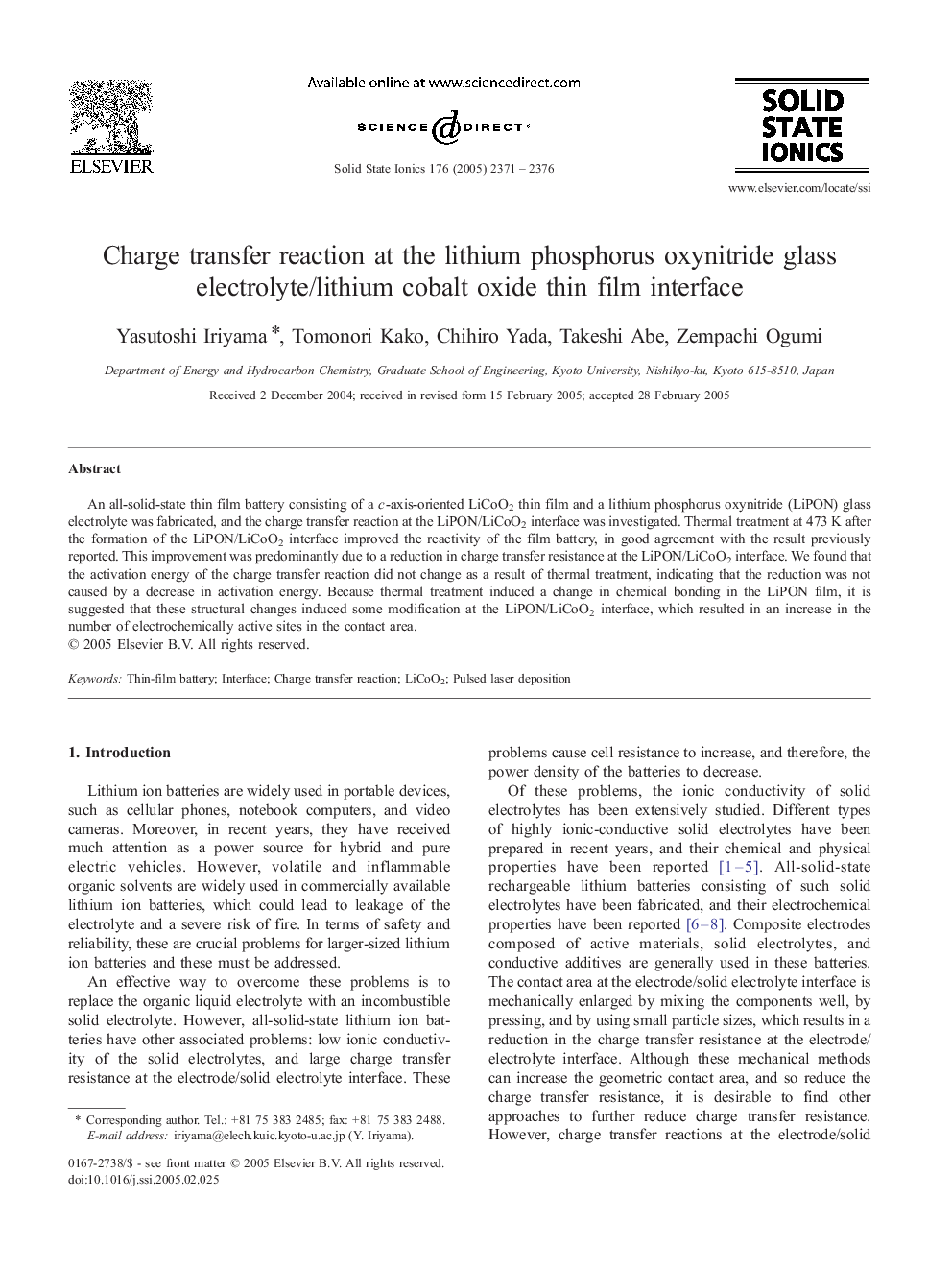| کد مقاله | کد نشریه | سال انتشار | مقاله انگلیسی | نسخه تمام متن |
|---|---|---|---|---|
| 1295806 | 1498416 | 2005 | 6 صفحه PDF | دانلود رایگان |

An all-solid-state thin film battery consisting of a c-axis-oriented LiCoO2 thin film and a lithium phosphorus oxynitride (LiPON) glass electrolyte was fabricated, and the charge transfer reaction at the LiPON/LiCoO2 interface was investigated. Thermal treatment at 473 K after the formation of the LiPON/LiCoO2 interface improved the reactivity of the film battery, in good agreement with the result previously reported. This improvement was predominantly due to a reduction in charge transfer resistance at the LiPON/LiCoO2 interface. We found that the activation energy of the charge transfer reaction did not change as a result of thermal treatment, indicating that the reduction was not caused by a decrease in activation energy. Because thermal treatment induced a change in chemical bonding in the LiPON film, it is suggested that these structural changes induced some modification at the LiPON/LiCoO2 interface, which resulted in an increase in the number of electrochemically active sites in the contact area.
Journal: Solid State Ionics - Volume 176, Issues 31–34, October 2005, Pages 2371–2376